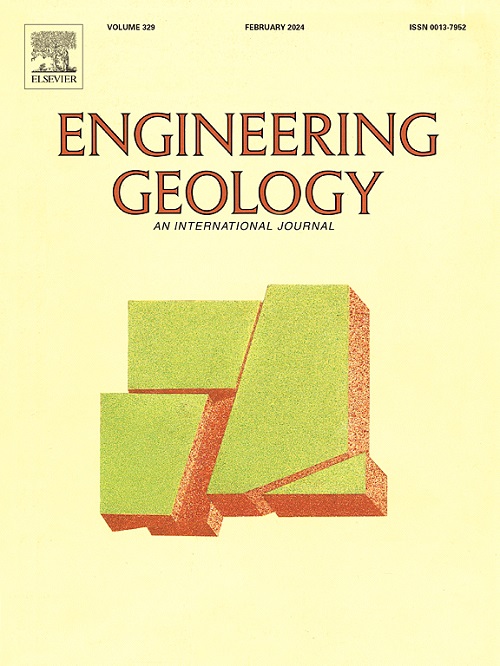Experimental study on the influence of rock pore structure on pressure stimulated voltage variations based on nuclear magnetic resonance
IF 6.9
1区 工程技术
Q1 ENGINEERING, GEOLOGICAL
引用次数: 0
Abstract
Since rocks will generate voltage under load, studying their voltage characteristics is of prime importance for the prevention and control of mine dynamic disasters and the corresponding secondary disasters. In this study, a pressure stimulated voltage (PSV) test system for rock materials under uniaxial compression was constructed to explore the law of PSV variations of rocks. Meanwhile, a nuclear magnetic resonance test system was employed for investigating the influence mechanism of pore structure changes on PSV variations. The following beneficial results were obtained. A “double-peak” phenomenon is observed on the PSV curves of granite and sandstone, whereas, for marble, the phenomenon only appears under high loading rates. The T2 spectra of different types of rock differ greatly. After granite fractures under load, some primary micro-pores are converted into meso-pores and macro-pores, accompanied by the generation of substantial new micro-pores. These micro-pores activate more rock defects (dislocation and grain boundary), resulting in a higher average PSV and peak PSV. After marble fractures, numerous primary micro-pores are transformed into meso-pores and macro-pores, and the proportion of new micro-pores falls. Consequently, its electricity generation capacity weakens. In contrast, sandstone contains a higher proportion of micro-pores. After it fractures, despite the conversion of some micro-pores into meso-pores and macro-pores, abundant micro-pores are generated again, bringing about a relatively high voltage. In short, the changes in overall porosity cannot represent the electricity generation capacity of rock, and the changes in bound cracks exert a profoundly influence on it. The key to the electricity generation capacity of rock lies in the increase and connection of micro-cracks.
基于核磁共振的岩石孔隙结构对压力刺激电压变化影响的实验研究
岩石在载荷作用下会产生电压,因此研究岩石的电压特性对防治矿山动力灾害及相应的次生灾害具有重要意义。本研究构建了岩石材料在单轴压缩条件下的压力激励电压(PSV)测试系统,以探索岩石 PSV 的变化规律。同时,采用核磁共振测试系统研究孔隙结构变化对 PSV 变化的影响机理。取得了以下有益成果。花岗岩和砂岩的 PSV 曲线上出现了 "双峰 "现象,而大理石只有在高加载速率下才出现这种现象。不同类型岩石的 T2 光谱差异很大。花岗岩在荷载作用下断裂后,一些原生微孔转化为中孔和大孔,同时产生大量新的微孔。这些微孔激活了更多的岩石缺陷(位错和晶界),导致更高的平均 PSV 和峰值 PSV。大理石断裂后,大量原生微孔转变为中孔和大孔,新微孔的比例下降。因此,其发电能力减弱。相比之下,砂岩的微孔比例较高。断裂后,尽管部分微孔转化为中孔和大孔,但仍会重新产生丰富的微孔,从而带来相对较高的电压。总之,整体孔隙率的变化并不能代表岩石的发电能力,而束缚裂隙的变化对其影响深远。岩石发电能力的关键在于微裂隙的增加和连接。
本文章由计算机程序翻译,如有差异,请以英文原文为准。
求助全文
约1分钟内获得全文
求助全文
来源期刊

Engineering Geology
地学-地球科学综合
CiteScore
13.70
自引率
12.20%
发文量
327
审稿时长
5.6 months
期刊介绍:
Engineering Geology, an international interdisciplinary journal, serves as a bridge between earth sciences and engineering, focusing on geological and geotechnical engineering. It welcomes studies with relevance to engineering, environmental concerns, and safety, catering to engineering geologists with backgrounds in geology or civil/mining engineering. Topics include applied geomorphology, structural geology, geophysics, geochemistry, environmental geology, hydrogeology, land use planning, natural hazards, remote sensing, soil and rock mechanics, and applied geotechnical engineering. The journal provides a platform for research at the intersection of geology and engineering disciplines.
 求助内容:
求助内容: 应助结果提醒方式:
应助结果提醒方式:


